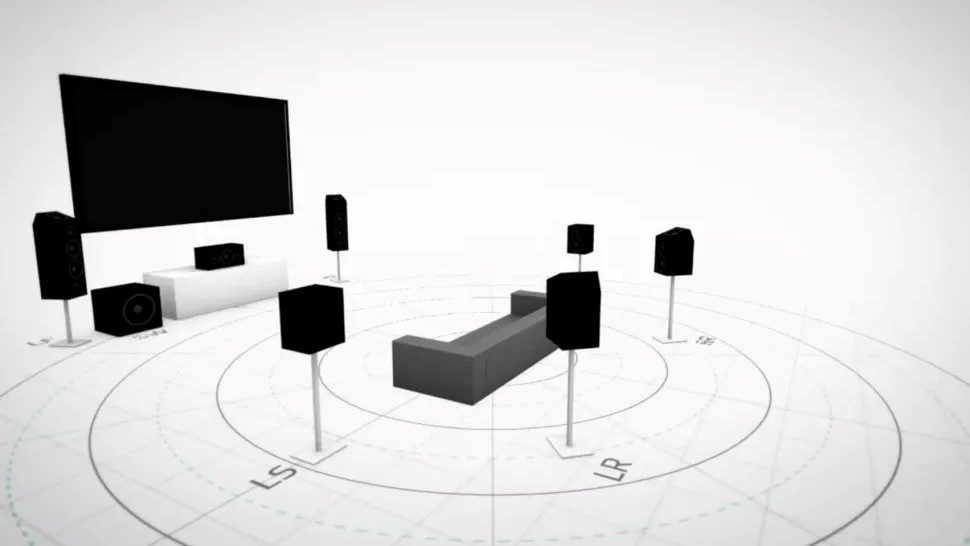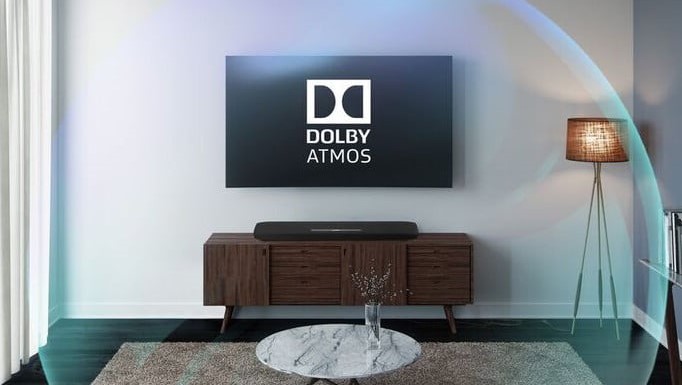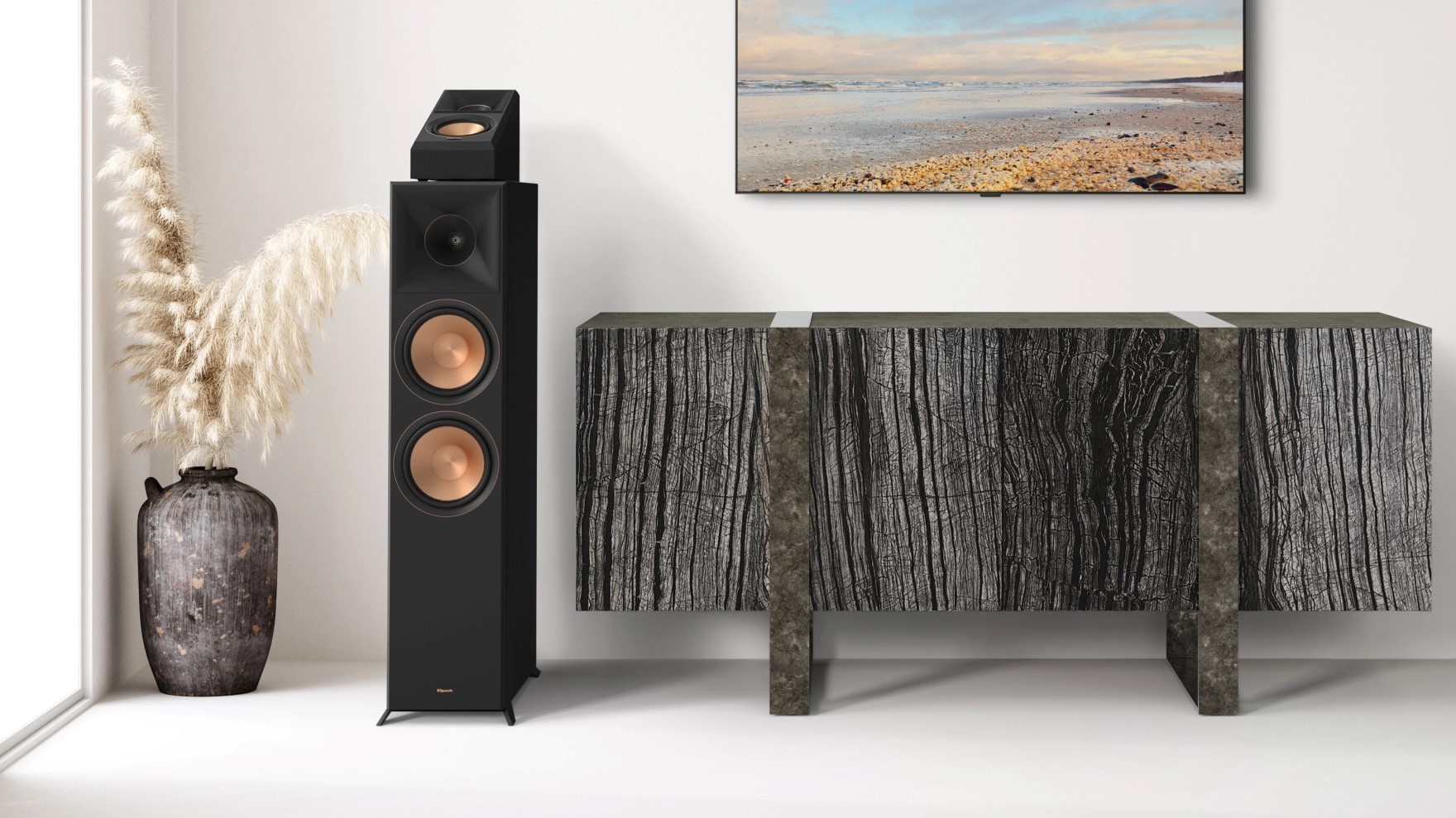Dolby Atmos: What it is and how to get it
Dolby Atmos takes surround sound to the next level with true 3D audio. Here's everything you need to know and how to buy the right gear

Dolby Atmos takes surround sound to the next level by delivering a true 3D audio experience. Think of it as 4K for your ears. Available in the best soundbars, game consoles, TVs, as well as smaller devices like laptops, phones and headphones, Dolby Atmos is becoming a must-have feature for serious movie fans.
But how does Dolby Atmos work? Where can you buy it? And what kind of content supports this technology? This FAQ is here to answer all your questions.

What is Dolby Atmos?
In a nutshell, Dolby Atmos is a proprietary audio format that's designed to bring that same immersive, 360-degree sound that you get in a movie theater to your living room or mobile device. The format has been around since 2012 and first appeared on Disney's Brave in movie theatres. The format gradually found its way into homes via custom installations, and more recently than that it has appeared on consumer audio products such as the best AV receivers and best soundbars.
Dolby Atmos has introduced home theatre fans to another dimension of surround sound by adding height elements to the soundstage. This gives a far more realistic impression of overhead action effects as well as subtle atmospheric and object-based locational effects that places the listener in a 'bubble' of sound for a more realistic sense of acoustic space matched to onscreen environments.
How does it work?
Dolby Atmos is all about the detail. In order to achieve that realistic sound, the technology uses a 9.1-bed channel (which consists of stationary sounds like background sound and music), 128 tracks and up to 118 simultaneous sound objects to create an immersive soundstage.

A sound object can be anything from the sound of footsteps or a basketball bouncing and has a specific position in a scene. Atmos lets content creators place those sounds in an exact location and set any movement (think of someone running away from you down a hallway) in a 3D space.

Once the audio mixing is completed, Atmos can bring theater-quality sound to your living room — provided you have Dolby Atmos-compatible equipment, such as one of our best soundbars or a home-theater system with one of the best AV receivers partnered to a surround sound speaker package.
The Atmos-optimized tech analyzes all the audio data, and based on the number speakers you have and their placement, it determines optimal playback in real time. That means that when an airplane flies overhead in your favorite movie, it will sound like there's an actual plane moving above you. The more speakers you have, the better the audio positioning as well as detail and overall audio richness and depth.
How does Atmos compare to surround sound?
The biggest difference between Dolby Atmos and traditional surround sound is the use of channels. Audio over conventional surround sound is mostly referred to as 5.1 (five speakers, one subwoofer) or 7.1 (seven speakers, one subwoofer) channels. In this kind of setup, you can hear a helicopter moving from right to left or vice versa, but the system can't reproduce the sound of something flying above you. This missing locational information can take away from the overall surround sound immersion factor.

Dolby Atmos assigns the acoustical sound and space around objects to a place. That means that if a sound occurs in the top right corner of the room, the audio will have better spatial accuracy instead of being fixed to the right speaker. And because Atmos-compatible speakers have integrated upward-firing drivers, you have the added benefit of height. This is achieved by bouncing the sound off the ceiling like those found in the latest Klipsch Reference and Reference Premiere loudspeaker series. It's not going to be as powerful as an actual height speaker, but it's an effective alternative.
Dolby Atmos at home
Not everyone has the space to accommodate multiple speakers dotted around the TV room, or indeed the finances to lavish on these indulgent and often upmarket home theater speaker packages. Luckily, for the more space conscious among us, the format has more recently started to be incorporated on several top-end soundbars, including the Bose Smart Soundbar 900, Bowers & Wilkins Panorama 3, Sonos Beam, Sonos Arc, and Sony HT-A7000.
Although still a considerable financial outlay for the very best soundbars, these powered speaker systems achieve a one-stop surround sound experience without the need for any additional speakers or components. Many soundbar models can also be partnered with optional wireless rear speakers and subwoofers should you wish to expand your home movie theatre sound system beyond the 'bar speaker system beneath the TV.
Do I really need Dolby Atmos?
Right now, Dolby Atmos is more of a want than a need. AV fans who already own 4K televisions or even 8K televisions will want to look into investing in Atmos-compatible home theater systems or soundbars. Everyone else can wait until the technology becomes more mainstream and the pricing becomes more affordable. And also bear in mind that this device delivers better TV audio than many soundbars.
But if you like feeling like you're in the center of your favorite action movie or sitting front row, center stage at your favorite artist's sold-out-for-months concert, then it's worth the investment. The easiest way is to stop by a big-box retail store and see if it has a Dolby Atmos home theater demo setup.

How easy is Dolby Atmos to set up?
It really depends on what you're buying. If you're going all out and getting a home theater system with ceiling-mounted height speakers, you might want to call in a professional to get everything up and running. Installing a soundbar is as simple as plugging it into the USB or optical port along the back of your television.

Where can I find Dolby Atmos content?
Just as consumer products have often arrived on the market with capabilities ahead of a new format's availability (think TV screens capable of handling 8K images while content availability remains scarce), Dolby Atmos support seems to be readily available while content can be difficult to find and access.
You can currently experience Dolby Atmos with select Blu-rays and through an array of streaming platforms, including Amazon Prime, Disney+ (now with support for Atmos on Apple TV 4K), HBO Max, and Netflix. In some cases you'll need to make sure you have the correct subscription for a particular platform, such as a plan that supports UHD streaming, which in the case of Netflix takes the monthly subscription fee to $19.99.
We're not going to list content availability for each of the streaming platforms here, but one of the best we've discovered for providing Dolby Atmos content without needing to pay an additional fee is through Amazon Prime. You can easily find Dolby Atmos content on Prime by inputting the term in the search bar to display all the movies and TV series it has available in the sound format in its free-to-play Prime tier; plus there's plenty of additional Dolby Atmos content to rent or buy should you feel like splashing out.
As an aside, Dolby Atmos can also be found on a number of music streaming platforms, including Apple Music, Tidal HiFi, and Amazon Music. These all offer a selection of songs and playlist in the audio format, which can be played through a compatible soundbar or headphones.
Read next: We rundown 5 of the best TV sound upgrades we've tested that will blow you away. And LG’s new 800W Dolby Atmos soundbar will blow you away and our full Sony HT-A7000 review. Also check out my own favorite Dolby Atmos soundbar.
Sign up to get the BEST of Tom's Guide direct to your inbox.
Get instant access to breaking news, the hottest reviews, great deals and helpful tips.

After 2.5 years as Tom's Guide's audio editor, Lee has joined the passionate audio experts at audiograde.uk where he writes about luxury audio and Hi-Fi. As a former editor of the U.K.'s Hi-Fi Choice magazine, Lee is passionate about all kinds of audio tech and has been providing sound advice to enable consumers to make informed buying decisions since he joined Which? magazine as a product tester in the 1990s. Lee covers all things audio for Tom's Guide, including headphones, wireless speakers and soundbars and loves to connect and share the mindfulness benefits that listening to music in the very best quality can bring.
